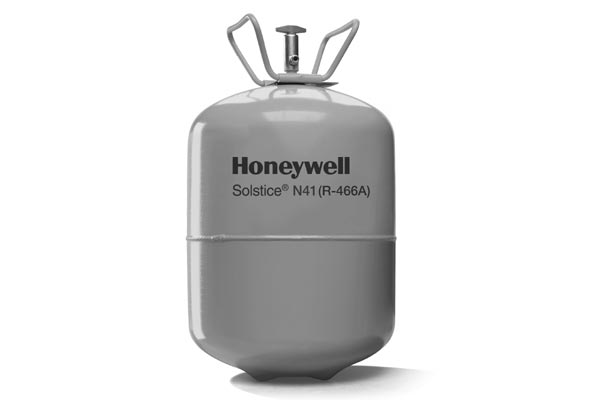Toshiba Carrier identifies Solstice N41 potential: Honeywell
Wed 06 Feb 2019, 11:58:09

Honeywell has announced that Toshiba Carrier has identified the potential of Solstice N41 (R-466A) as an alternative to R-410A, the heating, ventilation and air-conditioning (HVAC) industry’s current standard in VRF systems.
The findings were presented at the 13th International Symposium on New Refrigerants and Environmental Technology in Kobe, Japan.
The findings from the Toshiba Carrier testing revealed that:
• Efficiency, cooling and heating capacity of VRF systems using N41 is very similar to those using R-410A;
• N41 life-cycle climate performance including direct and indirect emissions is 30 percent lower than R-410A;
• Design pressures of N41 are slightly lower than R-410A, reducing the need for system redesign which lowers conversion cost.
Numerous regulations including Europe’s F-Gas regulation and the internationally-adopted Kigali Amendment to the Montreal Protocol require the phase down of high global-warming-potential (GWP) products, prompting the HVAC industry to seek new alternatives, said a statement from the company.
The current industry standard refrigerant, R-410A, must be replaced with an energy-efficient, lower-GWP solution with similar or better performance. With a GWP that is 65 per cent lower than R-410A, Solstice N41 is the first replacement refrigerant that delivers all three attributes, and provides the same level of safety to contractors and customers as R-410A.
“To meet Japan’s HFC phase-down requirements in support of the Kigali Amendment, Toshiba Carrier is actively seeking a next-generation replacement for R-410A that is energy efficient and safe for our customers and the environment,” said Toshiba Carrier in a statement. “After the promising initial performance testing, we are excited to see if Solstice N41 can be a non-flammable, safe alternative to R-410A that could contribute to the achievement of Japan’s HFC phase down goals. We have been engaging in reliability
testing to handle the newly developed refrigerant in VRF systems.”
testing to handle the newly developed refrigerant in VRF systems.”
Solstice N41 is a class A1 reduced global-warming-potential (GWP) refrigerant for use in stationary air conditioning systems. When commercially available in mid-2019, Solstice N41 will be the first non-flammable reduced GWP R-410A replacement refrigerant offered for stationary air conditioning systems.
All other reduced GWP alternatives proposed to date as R-410A replacements are flammable, increasing risk.
Sanjeev Rastogi, vice president and general manager of Honeywell Fluorine Products, said: “The Toshiba Carrier finding in the initial testing is a great validation that our non-flammable, reduced GWP Solstice N41 technology is poised to solve a key problem, becoming the next global standard for refrigerants.”
“What we invented and achieved in Solstice N41 can be a true breakthrough as it provides the industry with a near drop-in solution that maintains safety levels across the value chain while offering significant environmental benefits,” he added.
Solstice N41 is part of the family of Solstice products which Honeywell developed to accelerate the transition away from hydrofluorocarbons (HFCs) and other materials with high GWPs. In addition to Solstice N41, in the past year, Honeywell has unveiled Solstice L41y, a reduced GWP refrigerant designed to replace R-410A for reversible heating and cooling applications. L41y is commercially available in Europe, including for compressors for both chillers and heat pumps.
Honeywell is a world leader in the development, manufacture and supply of refrigerants sold globally under the Solstice and Genetron brand names for a range of applications, including refrigeration, building and automobile air conditioning.
Honeywell and its suppliers have completed a $900 million investment program in R&D and new capacity based on Honeywell hydrofluoroolefin olefin (HFO) technology, it stated.
No Comments For This Post, Be first to write a Comment.
Most viewed from International
Most viewed from World
AIMIM News
Latest Urdu News
Most Viewed
May 26, 2020
Do you think Canada-India relations will improve under New PM Mark Carney?
Latest Videos View All
Like Us
Home
About Us
Advertise With Us
All Polls
Epaper Archives
Privacy Policy
Contact Us
Download Etemaad App
© 2025 Etemaad Daily News, All Rights Reserved.



.jpg)




.jpg)
.jpg)
.jpg)









.jpg)

.jpg)
.jpg)
.jpg)

















